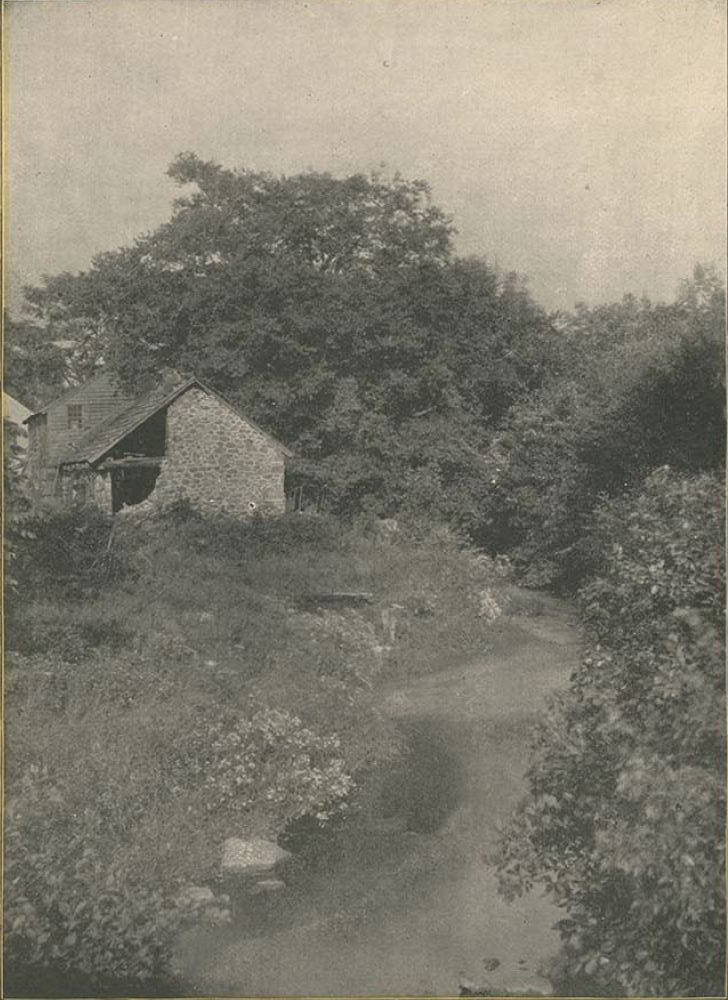 |
|
Tredyffrin Easttown Historical Society Home
: Document Collection Home
Use the links at the left to return.
|
Document Collection |
Waterloo AvenueRamble Fourth |
|
Another mile south brings us to the Newtown and Paoli Road. A large building with a mansard roof, which we will see to the left after passing the intersection, is the old Thomas House (remodeled), notes as being the last stronghold of the Seventh Day Baptist’s in Southeastern Pennsylvania.  On the Darby at Waterloo Mills Six or Eight minutes’ drive further toward Newtown Square, and we pass the Old Square. It was in the building on the southwest corner of this intersection that Benjamin West’s father kept a tavern for many years, and there the celebrated painter passed his boyhood days. In the small Sabbatarian cemetery in front of the Baptist Church, on the left, rests under the raised marble tomb, the mother of General Anthony Wayne. A short distance ahead on the right we pass the Old Newtown Friends’ Meeting House, part of the walls dating from the 17th century. At Newtown Square the West Chester Road is reached - just half way between West Chester and Philadelphia. Now our path leads directly to Media and Chester. It is known as the Providence Road, and passes through romantic vale’s, enchanting scenes meeting us at every turn. The Old Mill on the Crum, of which we show an illustration, is situated on this road, two miles from Newtown Square. If we turn to the west at the Square, a short drive toward West Chester will bring us to that remarkable upheaval of unstratified rocks called Castle Rock; here in the caves the notorious Revolutionary outlaw, Captain Fritz, had his hiding place. Opposite Castle Rock the Crum forms a romantic valley, locally known as Hatch’s Hollow, and said to be haunted, the mill as well as a number of tenement houses having fallen into decay for want of occupancy. |